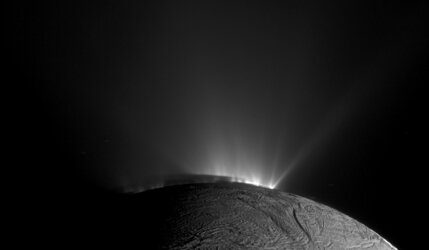EGNOS tested on trip to International Space Station
On the next Soyuz flight 10S to the International Space Station, Italian ESA astronaut Roberto Vittori will perform a series of technology experiments called ENEIDE (Esperimento di Navigazione per Evento Italiano Dimostrativo di EGNOS) which will apply advanced navigation techniques based on the European Geostationary Navigation Overlay Service (EGNOS).
EGNOS is Europe’s first venture into satellite navigation and is the precursor to Galileo, Europe’s own global satellite navigation system. EGNOS will augment the two military satellite navigation systems now operating, the US GPS and Russian GLONASS systems, making them suitable for safety critical applications such as flying aircraft or navigating ships through narrow channels.
The objective is to measure and verify in Low Earth Orbit, the GPS and EGNOS signals, which will be used in the combined GPS/EGNOS navigation system for spacecraft control and guidance.

The ENEIDE experiment will exploit the EGNOS signals with the use of a spaceborne Global Navigation Satellite System receiver developed by Alenia Spazio in 1999. This will verify the performance of the GPS/EGNOS receiver on board the Soyuz spacecraft and compare results from the combined receiver during different phases of the mission with equivalent data received from the spacecraft and the ISS.
ENEIDE can be considered the forerunner of a similar experiment that can be performed at a later stage to validate the use of the combined GPS/Galileo/EGNOS navigation system for spacecraft control and guidance, when the Galileo signal is broadcast from space.
How is it done?
The experiment will be performed on board the Soyuz spacecraft by the Italian astronaut. It will be carried out during the orbital phase and after the docking between Soyuz and the International Space Station (ISS).
After launch, during the orbital phase of the Soyuz mission two time slots of at least 6 hours without spacecraft manoeuvres will be identified to perform the first stage of the experiment. In these periods the Italian astronaut will monitor the receiver activity every 60 minutes via a laptop.

After docking between the Soyuz and the ISS, at least three time slots of a minimum of 6 hours will be identified to perform this last phase of the ENEIDE experiment. The astronaut will monitor the receiver activities every 3 hours via a laptop.
During the orbital phase, the Soyuz spaceship will receive the signals from the Inmarsat and/or Artemis satellites. These are in geostationary orbit about 36,000km above the Earth. These signals will be used to determine the position and velocity of spacecraft and to verify the correct reception of integrity messages from EGNOS. The ENEIDE receiver will use these signals to determine the position and velocity of the spacecraft and to verify the correct reception of integrity messages from EGNOS.
EGNOS is a joint programme of the European Space Agency, the European Commission and Eurocontrol, the European Organisation for the Safety of Air Navigation. It will be operational for non safety critical applications by mid 2005 and will then undergo operational qualification activities towards its availability for “safety of life services” in 2006.















 Germany
Germany
 Austria
Austria
 Belgium
Belgium
 Denmark
Denmark
 Spain
Spain
 Estonia
Estonia
 Finland
Finland
 France
France
 Greece
Greece
 Hungary
Hungary
 Ireland
Ireland
 Italy
Italy
 Luxembourg
Luxembourg
 Norway
Norway
 The Netherlands
The Netherlands
 Poland
Poland
 Portugal
Portugal
 Czechia
Czechia
 Romania
Romania
 United Kingdom
United Kingdom
 Slovenia
Slovenia
 Sweden
Sweden
 Switzerland
Switzerland



























